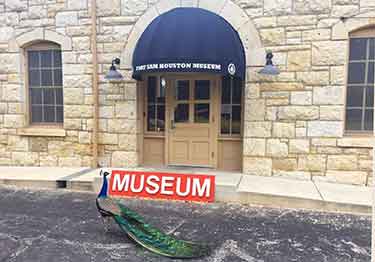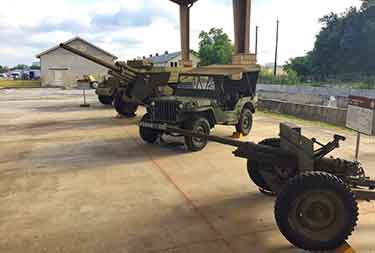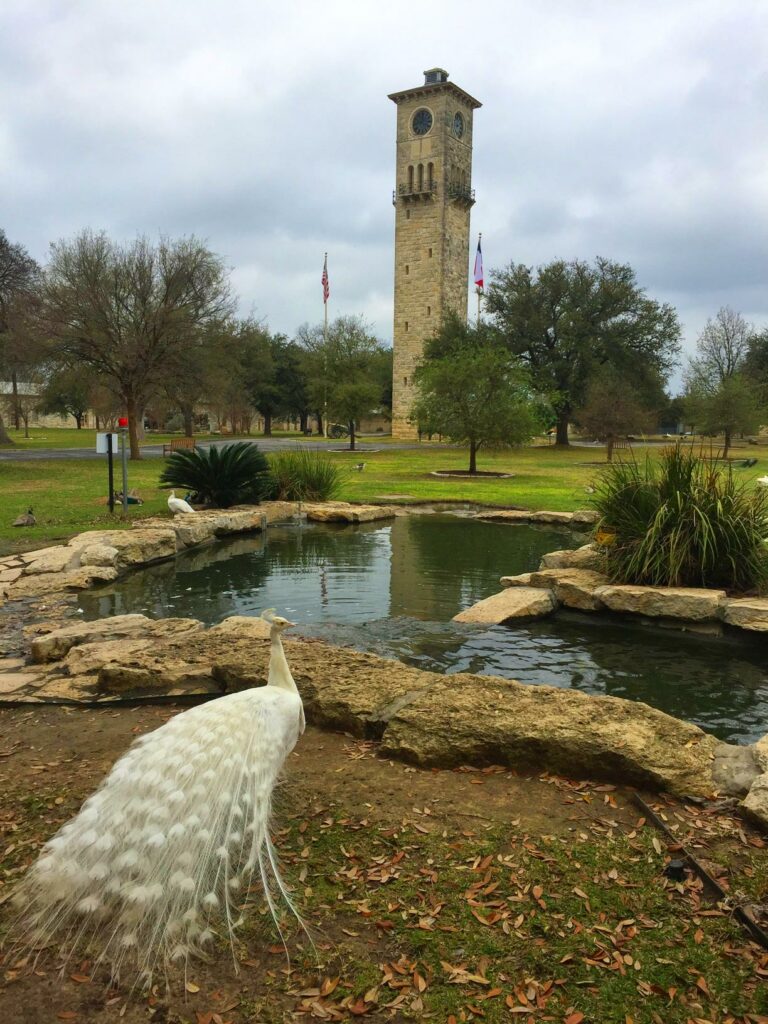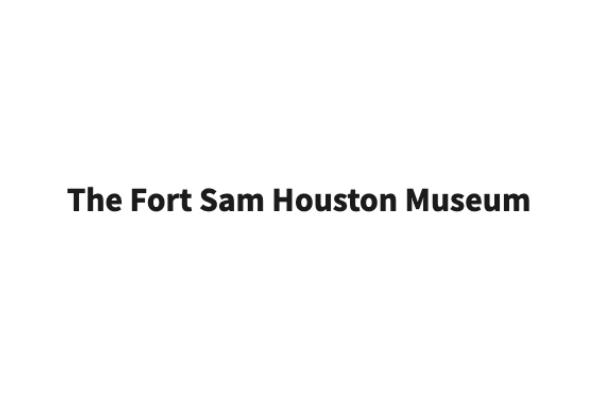


The Fort Sam Houston Museum tells the story of Fort Sam Houston from its beginning in 1845 as the Post at San Antonio to the present day. It also highlights the close relationship between the Post and San Antonio — “Military City, USA” — with roots extending back to the Spanish presidio of 1718.
Artifacts, images, and stories share the events and people that transformed a small Post and quartermaster depot into one of the nation’s largest military installations by the start of the 19th-Century, then follows the post’s impact on military readiness into the modern era and today.
Housed in a National Historic Landmark structure built in 1876, the museum looks out on the iconic Fort Sam Houston Quadrangle, with its centerpiece Clock Tower and the home of Fort Sam’s peafowl and deer who have been part of the scenic landscape for more than 130 years.
Gallery of Exhibits
Exhibits trace the history and development of the Post at San Antonio from its founding to today’s Joint Base San Antonio. Each area features artifacts, images, and stories highlighting the activities and events that impacted Fort Sam Houston, and organizations, units, and people from all Services which have served here.
Alongside themes of Fort Sam Houston’s history, throughout the exhibits is the story of the evolution of American military installations, border security, medical service and training, mobilization activities, and the evolution of Army uniforms.
Historical Information
The Fort Sam Houston Museum tells the story of Fort Sam Houston from its beginning in 1845 as the Post at San Antonio to the present day. It also highlights the close relationship between the Post and San Antonio — “Military City, USA” — with roots extending back to the Spanish presidio of 1718.
Located in the historic Quadrangle, the Fort Sam Houston Museum tells the story of one of the oldest active Army posts in America.
The U.S. Army established its presence in San Antonio in 1845. As a staging area and supply point for troops headed across the border during the War with Mexico, the post proved a strategically valuable asset. Following the war, it was designated Headquarters, Eighth Military Department, and tasked with oversight of border defense and securing the western frontier, as well as continuing as a supply depot.
In 1876, the post began constructing new facilities on Government Hill. The central structure, the Quadrangle, became the new Quartermaster Depot and Headquarters, Department of Texas. Today, it still houses headquarters for Army North, and is also home to the Fort Sam Houston Museum.
At the end of the Indian Wars, the post was expanded as the Army consolidated its facilities, and in 1890, now 45 years old, finally got an official name, “Fort Sam Houston.”
Following the Spanish American War, the post again expanded, this time to house a brigade and accommodate units and troops rotating to the Philippines. From then until World War I, it was the largest post in the Army.
During this period, Fort Sam Houston also gave birth to military aviation. On 2 March 1910, the first entirely military owned, piloted, and planned flight took place here, providing the first step in the formation of the U.S. Air Force.
As the turmoil of the Mexican Revolution threatened the U.S., in 1916 Headquarters, Southern Department oversaw border operations from from the Quadrangle of operations spreading from Texas to Arizona and then into Mexico itself with Pershing’s famous Punitive Expedition. Fort Sam Houston itself served as a mobilization point and staging area for virtually the entire National Guard, called up by President Wilson to protect the border.
As the U.S. entered World War I, Fort Sam Houston grew yet again. Over 1400 new structures were built in less than three months on the post and at Leon Springs Military Reservation, and the completely new mobilization installation, Camp Travis was also established.
Following World War I, Camp Travis became home to the 2nd Division. When Camp Travis merged into Fort Sam Houston, the 2nd Division became known as “Fort Sam Houston’s Own” and ran the post. The Quadrangle now housed the Headquarters, 8th Corps Area (later Service Command) and its combat arm, Third Army.
World War II saw additional expansion as Headquarters, Third Army split to form Headquarters, Sixth Army, and a Reception Center was added to help in-process the massive number of draftees and volunteers needed for the war. When Sixth Army left for the Pacific Theater and Third Army left for Europe, Headquarters, Fourth Army moved into the Quadrangle and organized headquarters for the Ninth, Tenth and Fifteenth Armies.
In the post-war years, as space for combat training exceeded what Fort Sam Houston could offer, warfighters were assigned elsewhere and Fort Sam focused on medical training, and earning the nickname “Home of Army Medicine.” In the Quadrangle, Headquarters, Fourth Army oversaw Cold War activities until 1971 when it merged with Fifth Army and was inactivated.
In 2003, U.S. Army South moved to Fort Sam Houston, and in 2008 its lineage was consolidated with that of the Sixth U.S. Army. In 2012, all the numbered field armies were re-designated, and Fifth U.S. Army became U.S. Army North. Between the two, they oversee defense activities for all of North and South America.
Besides these two headquarters, Fort Sam Houston is home to nine other General Officer commands, including Navy and Air Force commands. Following the reorganization of military installations in 2005, they now all fall under Joint Base San Antonio.
Designated a National Historic Landmark in 1975, Fort Sam Houston stands as one of the Army’s most historic posts, continuing to serve the nation and world.

